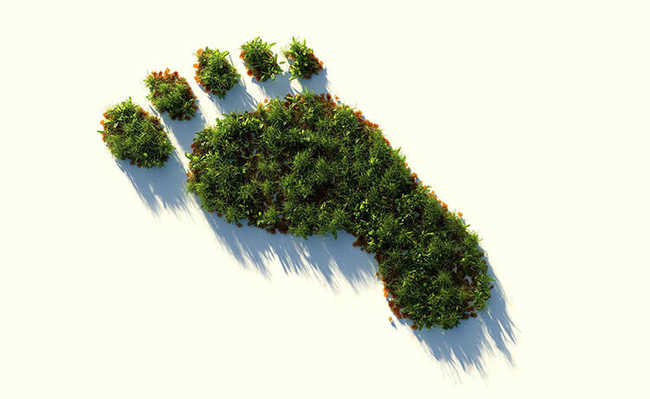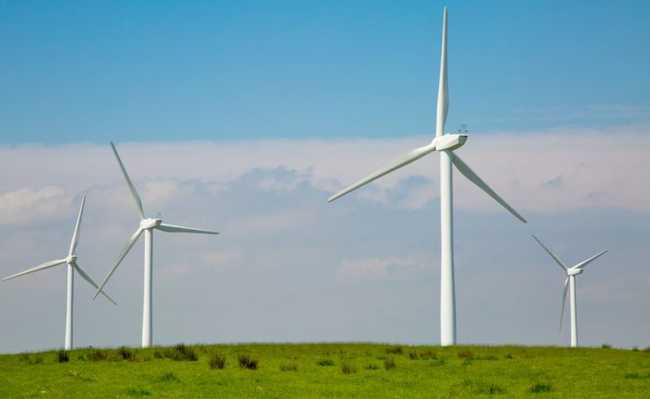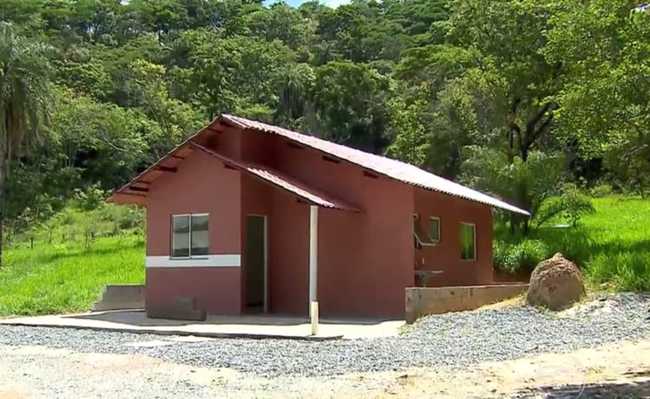What is ecological footprint?
All actions applied to the environment leave impacts known as ecological footprint

Colin Behrens image by Pixabay
The ecological footprint is linked to the growing global demand for consumer goods, which puts the planet's main natural resources at risk. Industry and consumers are often not fully aware of the level of impact this requirement can have on the environmental balance. In other words, when an entrepreneur decides to open a shoe factory, for example, he will spend certain amounts of natural resources so that the final product can be sold. And the consumer who needs a new pair of shoes will buy the product. But neither party knows for sure what ecological demand the object has caused in nature. This lack of information complicates the design of public policies and contributes to the ecological burden of the planet.
The Romanian Nicholas Georgescu-Roegen, in the book The Entropy Law and the Economic Process (The Entropy Law and the Economic Process, in free translation), from 1971, was one of the first to address the topic, when he spoke about bioeconomy and the concern with the continuity of life of various species on Earth. In the book, based on the second law of thermodynamics, the law of entropy, Georgescu-Roegen points to the inevitable degradation of natural resources as a result of human activities. He criticized neoclassical liberal economists for advocating limitless material economic growth, and developed an opposite and extremely bold theory for the time: economic degrowth.
First discussions on ecological footprint
The key question for formulating such an ecological footprint is: how much natural resources do we use to keep the world's population dressed, fed, hydrated and updated with the most innovative consumer goods? Another important complementary question is: how to know if human consumption is within the planet's biocapacity?
A major contribution to the analysis of these problems was given by William Rees and Mathis Wackernagel, both from Global Footprint Network (GFN), in 1993, when they defined the concept of “environmental footprint”, a tool used to measure the impacts of human consumption on natural resources. With this tool, we can measure the environmental footprints of a person, city, region, country and all of humanity.
What is an environmental footprint?
According to Professor Geoffrey P. Hammond, the term environmental footprint has the same meaning as ecological footprint and is often also referred to as an eco-footprint (Costanza, 2000). The ecological footprint is a sustainability indicator that tracks the competition of human demands with the planet's regenerative capacity, that is, it compares the planet's biocapacity with the demand for natural resources necessary for the development of consumer goods and services, integrating the footprint of carbon, which represents the number of forests indispensable for absorbing the CO2 emissions that the oceans cannot capture - this is the only residual product accounted for. Both ecological footprint and biocapacity are expressed in global hectares (gha), which represents the production capacity of one hectare of land, considering the world average productivity. Therefore, the ecological footprint analyzes the impacts we produce on our biosphere.
To calculate the ecological footprint, different ways of using natural resources are considered. These shapes can be measured in area units, which are important to maintain biological productivity. Resources that cannot be measured by these terms are excluded from the calculation - that is why solid waste and water are not counted in the ecological footprint, for example. The components of the footprint are divided into sub-footprints which, when added together, reveal the size of the total ecological footprint. Sub-footprints are calculated using specific tables according to each type of consumption and converted into hectares. As sub-footprints we have:
- Carbon retention footprint: amount of forest needed to absorb carbon dioxide that the oceans could not absorb;
- Pasture footprint: area needed for raising cattle for slaughter, dairy, leather and wool production;
- Forest footprint: based on annual wood consumption for various products;
- Fisheries Footprint: is based on a production estimate to support fish and shellfish caught from freshwater and marine;
- Footprints of the cultivation areas: represented by the areas necessary for the cultivation of human food and animal feed, as well as oilseeds and rubber;
- Built-up area footprint: represented by all areas with human infrastructure, as well as transport, industries, reservoirs for electricity generation and housing.
The ecological footprint is not alone
Currently, in addition to the ecological footprint, we have several sustainability indicators to help us with the impacts we produce on the planet. Two examples are the water footprint and the carbon footprint.
To give you an idea, the water footprint approach, measured in liters, can be subdivided into blue, green and gray water, in order to better encompass your demand. Blue water refers to groundwater, fresh water, lake and river water; green water refers to rainwater; and gray water refers to the amount of water needed to dilute any pollutants that are produced. The purpose of the water footprint is to measure impacts on our hydrosphere.
The carbon footprint, on the other hand, measures the amount of carbon dioxide (CO2) that was emitted into the atmosphere, directly or indirectly, by human activities or that were accumulated over the life of a product. Therefore, it measures the impacts caused on our atmosphere.
But it is good to emphasize that the environmental footprint measures only the sum of the sub-footprints that were mentioned at the beginning of this text - that is, the carbon footprint and the water footprint are not included in the account, they are just complementary models to measure other types of environmental impact.
Different model and examples
While standard economic models examine the financial costs of products, the concept of footprints (ecological, water, carbon and others) allows us to assess the costs of natural resources involved in the production of a given good from the quantities of soil, materials and water used and gas emissions that contribute to global warming.
All products, from a cup of tea to a cotton coat, have impacts on natural resources throughout their production chain. A cotton coat, for example, uses resources in the cultivation and harvesting of cotton, in operations to transform cotton into fabric, in the final production of clothing, in transport, etc. All of these steps require different amounts of resources, such as soil, water, materials and energy, which are measured by different types of footprints. The ecological footprint of this item, for example, would measure the sum of the sub-footprints (carbon retention, forest, cultivated area, pasture, etc.) to determine, in global hectares, what the environmental footprint of the product was.
For the industry, it is important to be aware of the footprints at each stage of the manufacturing process, as this type of study reveals the efficiency of its processes in relation to the use of natural resources, in addition to making it possible to identify the points of vulnerability present in each supply chain process. For the public power, the importance is given to the elaboration of policies for the use of natural resources, in order to avoid an ecological deficit.
The impact of footprints depends on each location. The impact of the ecological footprint will depend on the nature of the land, how it is used and whether there are competitive uses.
Shows factors that promote impacts
The ecological footprint does not directly reveal ecological or social impacts, but it does show the factors that promote the impacts. Watch this video exemplifying the issue of the environmental footprint:In other words, the ecological footprint is the set of footprints left by human activities in the environment (in terms of global hectares) and, generally, the larger your footprint, the greater the impact caused.
Observing in general, the way in which footprints are distributed presents an uneven character, societies that are heavily industrialized have larger footprints than those with less industrialization and increasingly these societies are seeking resources in different locations, leaving their footprints for different parts of the planet.
Ecological footprint analysis sends out a warning signal to reflect on our ways of life, suggesting the need to follow sustainability guidelines, and supporting a broad program of changes that make us reflect in which direction we should go. In summary, assuming that this approach reflects the material reality better than traditional economic models (which only take into account the economy or consumption), this analysis is a good reference for us to follow in a way that the planet supports humanity.










